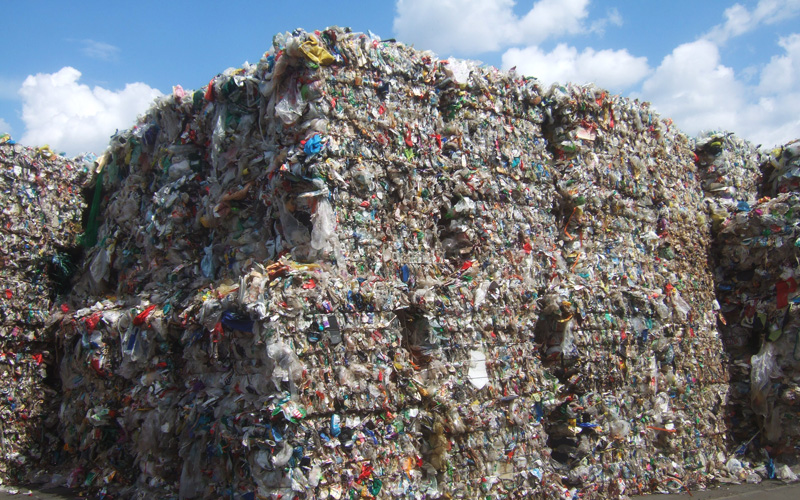This is with the exception of low-density polyethylene (LDPE) post-commercial flexible bales, where the spread has been at its narrowest since January.
90% mixed polyolefin bale values are now €50/tonne on average below mono-material high-density polyethylene (HDPE) mixed-coloured bales, €75/tonne on average below post-consumer polypropylene (PP) bales, and €100/tonne on average below black post-industrial PP bales and natural LDPE flexible post-commercial 98/2 bales.
In addition, there was talk in recycled polyolefin markets this week that players are starting to restrict activity to core markets.
This is amid high energy costs, macroeconomic weakness, substitution to virgin and narrowing margins for non-packaging markets such as construction and automotive.
Meanwhile, downstream spot recycled mixed polyolefin pellet prices – which are typically used in non-packaging mechanical recycling applications such as construction – have been reported as low as €760/tonne ex-works NWE (northwest Europe) this week.
Despite these factors, players are not currently seeing downward pressure on 90% mixed polyolefin values.
This was, in part, attributed to low availability and partly attributed to pyrolysis-based chemical recyclers absorbing demand loss from mechanical recycling, as pilot plants continue to scale-up.
The onboarding of pyrolysis-based chemical recycling is expected to further tighten availability in the mid-term.
90% mixed polyolefin merchant market availability has narrowed throughout 2022 as waste managers have increasingly onboarded capacity to reprocess material captively.
The majority of the chemical recycling market remains pre-commercial and, although volumes are expected to increase significantly in 2023 and 2024, most expect it to take at least five years for the market to reach scale.
Multiple market players have voiced concern in recent months that waste availability in Europe remains insufficient to cover future volume needs of the chemical recycling industry in 2023 and 2024.
Although chemical recycling can take waste fractions that are not possible to mechanically recycle, there are still a number of technical requirements for waste input.
Pyrolysis, for example, typically requires the minimisation of chlorine content (typically to 0.1% or less) due to its corrosive effect.
It also requires the removal of PET because it oxygenates the process and does not depolymerise using pyrolysis, and the avoidance of nylon and flame retardants.
Coupled with this, the ongoing lack of clarity over chemical recycling’s legal status continues to concern industry players and, along with access to waste, remains one of the key risk factors to industry growth.
Current EU regulations typically use the definition of recycling set out in Directive 2008/98/EC, in which recycling is any recovery operation by which waste materials are reprocessed into products, materials or substances, whether for their original or other purposes.
It includes the reprocessing of organic materials but does not include energy recovery and the reprocessing into materials that are to be used as fuels or for backfilling operations.
This leaves the regulatory status of chemical recycling under the proposals uncertain.











